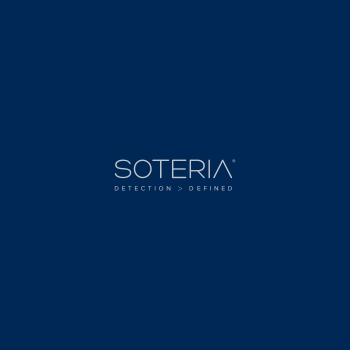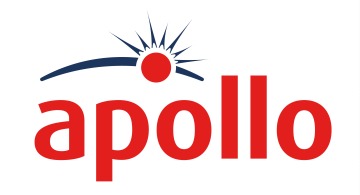Apollo detectors protect the National Gallery of Slovenia
31 Mar 2016
After years of restoration and extension, the new National Gallery of Slovenia in Ljubljana finally reopened its doors on 27 January 2016.
Founded in 1918, The National Gallery is the main art museum in Slovenia and contains the largest visual arts collection from the late medieval period to the early twentieth century. Soon after its opening, the extensive collection of Slovenian art started to outgrow the restricted space and additional rooms and buildings were used temporarily over the years to house special exhibitions. Finally, in 1991, construction started on a new building, culminating with the opening of the magnificent new entrance hall in 2001. Until the recent refurbishment, the valuable collections were housed in three separate buildings constructed between 1894 and 2001. Now, the National Gallery is one of the largest museums in Slovenia with an exhibition space of over 13,000 square metres.
In 2015, the construction project entered its third and final phase - the reconstruction of the Narodni Dom Palace, including its exterior and communal facilities. Originally constructed in the 19th century during the rule of the Austro-Hungarian Empire, the imposing architecture of the Narodni Dom is seen as a symbol of the growing awareness of the Slovenian nation and its bourgeoisie at the time.
In 2014, Apollo’s long-term partner in Slovenia, Zarja Elektronika d.o.o, was awarded the contract to design and install the fire protection system. Zarja Elektronika has been working to secure the National Gallery since the 1980s, a track record that helped the Apollo partnership to be successful at the end of a long and competitive tender process.
“We have been installing fire detectors from Apollo for many years,” said Mr. Boris Grivić, CEO of ZARJA Elektronika. “In our experience, Apollo detectors are reliable, robust and suitable for a wide range of environments. They also work very well with our control panels.”
The challenge
Replacing and upgrading fire detection systems in old historic buildings that have undergone a number of refurbishments and extensions over more than a century, presented the system designers with a special set of challenges.
Old detectors and wiring had to be removed and replaced with systems that conform with modern fire safety standards. Zarja Elektronika’s technical team also had to schedule their work around the restoration specialists working on the fabric of the old building.
The new fire safety system is part of a modern Alarm Management System (AMS). Installed by Zarja Elektronika, the system combines fire detection and extinction, burglar alarm, access control, video surveillance and specially designed sensors to protect the most valuable pieces of art individually. In total, over 650 detectors were installed to protect the gallery’s paintings and statues.
The new system
The newly installed system comprises of Apollo’s Reflective Beam Detectors, XP95 Optical Smoke Detectors, XP95 Manual Call Points and sounders together with Zarja Elektronika’s own control panel NJP-400A. It also includes an extinguishing system.
In accordance with the Slovenian Act on Fire Protection and Private Security, the new system overall complies with EN 54 and was installed following the TSG 1-001:2010 guidelines.
Three of the zones are covered by fire detection and automatic extinction - the paper store, gas quarantine and the paint workshop. All alarms automatically alert the police and the building’s security hub.
The overall aim of the renovation was the protection and preservation of the building's architecture as part of Slovenia’s cultural heritage. This third phase has finally finished the National Gallery's construction and renovation as proposed in the 1980s. The new and renovated buildings are earthquake proof, protected against fire, secure and functional.
For more information on Apollo products visit www.apollo-fire.co.uk.
Apollo Fire Detectors Ltd
Website
Email Us
T: +44 2392 492 412
36 Brookside Road
PO9 1JR
Havant, Hampshire
United Kingdom
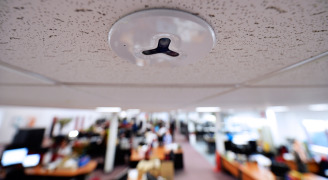
Product
SOTERIA Dimension
SOTERIA® Dimension is a range of sleek, flat optical fire detectors for flush mounting, using chamberless fire detection technology. The new range consists of an Optical Detector designed for commercial environments with high aesthetic requirements and a Specialist Optical Detector, designed for custodial ...
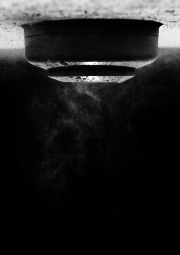
Product
SOTERIA
The SOTERIA® collection offers the next generation in fire recognition technology and has been developed to improve detection, reduce false alarms and deliver improved reliability. Complementing SOTERIA® is Apollo’s enhanced protocol, CoreProtocol®, the next generation in fire loop communication givi...

Product
Intelligent System Interfaces
The new range, which meets EN 54-17 and EN 54-18 standards, is the latest addition to the range of CoreProtocol® enabled devices following the launch of the new Apollo SOTERIA® detectors earlier this year. All devices are backwards compatible but, when used with CoreProtocol®, provide enhanced functionalit...
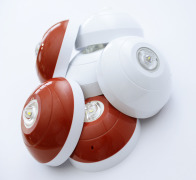
Product
Category C. Loop Powered VAD
The VAD has been developed as a primary or supplementary alarm device for use in situations where there is a risk that sounders will not be heard. This occurs, for example, where there is a high background noise e.g. in a workshop or a machine room. It might also be required where deaf or hearing impair...
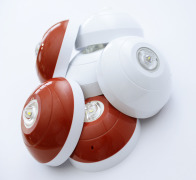
Product
Category W. Loop Powered VADs
The VAD has been developed as a primary or supplementary alarm device for use in situations where there is a risk that sounders will not be heard. This occurs, for example, where there is a high background noise e.g. in a workshop or a machine room. It might also be required where deaf or hearing impair...

Product
Intelligent Manual Call Point
The Intelligent Manual Call Point has been designed to operate on a loop of intelligent fire detection devices. An alarm is initiated by pressing the resettable element. The manual call point signals to the Control and Indicating Equipment using an interrupt feature within the Apollo Digital Protocol. An a...






